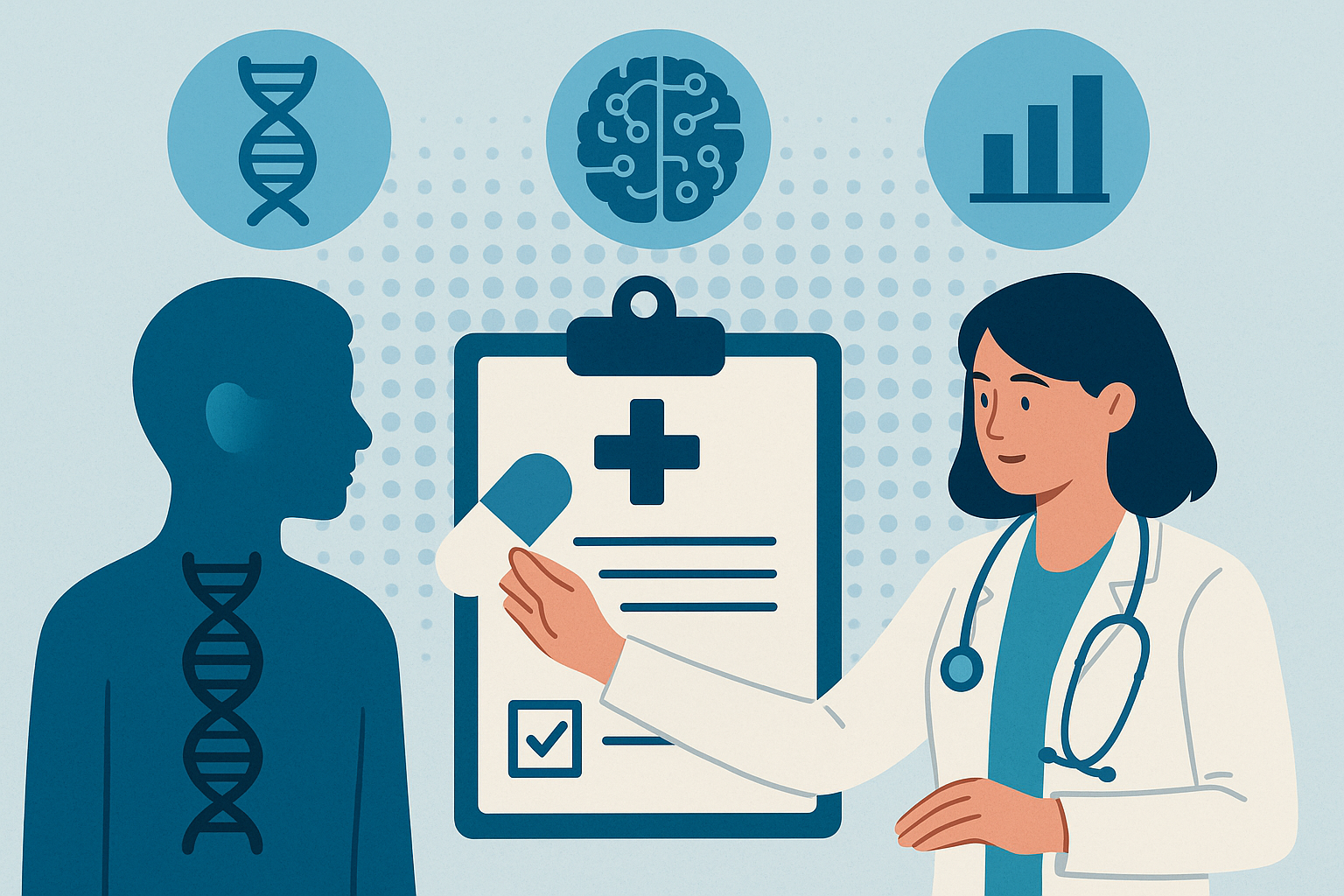🔬 Precision Pharmacovigilance
Transforming Drug Safety Through Personalized Medicine, Genomics, and AI-Powered Analytics
Precision pharmacovigilance represents a paradigm shift from reactive, population-level drug safety monitoring to proactive, individualized risk assessment using genomics, real-world data, and artificial intelligence.
🔴 Traditional Pharmacovigilance
- Focus: Adverse Drug Reactions (ADRs)
- Data Sources: Spontaneous Reporting Systems
- Methodology: Reactive (post-market)
- Scope: Population-level
- Causality: Challenging/retrospective
- Technology: Manual review, basic databases
🟢 Precision Pharmacovigilance
- Focus: Predictive risk, individualized response
- Data Sources: Genomics, EHRs, RWD, AI/ML
- Methodology: Proactive (prediction, prevention)
- Scope: Individual/subgroup level
- Causality: Enhanced/prospective
- Technology: Advanced analytics, AI, integrated platforms
Genomics & Pharmacogenomics
Tailoring drug prescriptions based on genetic variations affecting drug response, minimizing risks and maximizing benefits
Real-World Data (RWD)
Comprehensive understanding of drug performance in diverse populations through EHRs, claims databases, and patient registries
Artificial Intelligence
Automated signal detection, predictive analytics, and processing of unprecedented volumes of health data
Wearable Devices
Continuous monitoring of real-world patient data, providing physiological and activity metrics for proactive health management
🧪 PREPARE Trial
Population: General population on common medications
Intervention: 12-gene pharmacogenomic panel
🇬🇧 UK Yellow Card Analysis
Scope: 1.3M ADR reports (1963-2024)
Finding: 9% of ADRs are PGx-modifiable
🏥 UK Progress Programme
Setting: Primary care (4 GP surgeries)
Target: Statins, antidepressants, PPIs
🎯 FDA Precision Oncology
Focus: Cancer treatment based on genomic profiles
Tool: Companion diagnostics
🦄 Rare Disease Initiatives
Challenge: Small patient populations
Solution: FDA RDEA Pilot Program
(highest PGx-modifiable ADRs)
(second highest)
vs Clinical Trials
for Rare Diseases
Data Integration
Complex integration of genomic data, EHRs, and RWD across disparate systems with different formats
Ethics & Privacy
Protecting sensitive genetic data while maintaining patient trust and enabling beneficial data sharing
Regulatory Evolution
Developing agile frameworks for AI, genomics, and RWD integration without stifling innovation
Collaboration
Coordinating stakeholders: pharmaceutical companies, regulators, providers, and patients
🎯 Predictive Risk Assessment
AI-powered systems will predict safety trends and proactively prevent harm rather than just detect it
📱 Continuous Monitoring
Integration of wearable devices for real-time health monitoring and dynamic treatment adjustments
🔄 Self-Correcting Healthcare
Dynamic feedback loops enabling real-time prescription and treatment plan adjustments
🏗️ Integrated Drug Development
Precision PV insights informing molecule selection and entire drug lifecycle management
- Data Infrastructure Investment: Develop robust, interoperable systems for diverse data types with standardization and security
- Regulatory Harmonization: Evolve and harmonize guidance for AI, RWD, and genomic data integration
- Interdisciplinary Training: Provide comprehensive education for healthcare professionals and data scientists
- Patient Empowerment: Simplify reporting mechanisms and educate patients about genetic information’s role
- Cost-Effectiveness Studies: Conduct health economic models to demonstrate financial benefits
Signal Detection
AI algorithms identify subtle safety signals and causal relationships that human reviewers might miss
Predictive Analytics
Machine learning predicts ADR likelihood in specific populations, enabling proactive interventions
Workflow Automation
Streamlined case processing, reporting, and literature review with improved accuracy and reduced costs
Broader Representation
RWE captures diverse patient populations often excluded from clinical trials, ensuring equitable safety insights



